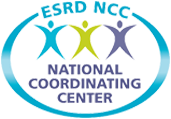To make good decisions about their care, dialysis patients and their caregivers need support and resources, including information about the value of fistulae over other access types, protecting their veins, and advocating for themselves with their health care team.
- Routine facility staff in-servicing and education program in vascular access.
- Continuing education for all caregivers to include periodic in-services by nephrologists, surgeons, and interventionalists.
- Facilities educate patients to improve quality of care and outcomes (e.g., prepping puncture sites, applying pressure at needle sites, etc.).
Changes for Improvement
Educate Patients to Improve Quality of Care and Outcomes Pre-Dialysis:
- Facilities and/or nephrologists should provide pre-ESRD education for patients and their caregivers to communicate the value of fistulae over other access types and access preparation (e.g., vessel mapping, and vein preservation strategies)
Post-Dialysis
- Facilities should educate patients on practices that can improve the quality of their care and their outcomes (e.g., prepping puncture sites, applying proper pressure at needle sites without clamps).
- Patients should be taught, where feasible, to manage their puncture sites without the use of clamps. If clamp use is necessary, dialysis clinic staff will evaluate and educate the patient and his/her caregiver on the safe use of clamps.
Provide Continuing Education for all Care Givers
- Provide continuing education for all caregivers to include periodic in-services by nephrologists, surgeons, and interventionalists.
Develop Routine In-Servicing and Education Programs in Vascular Access for Facility Staff
- Facilities should provide routine in-servicing and education programs for all staff to communicate the value of fistulae over other access types and best treatment practices for patients with fistulae.
Resources
American Association of Kidney Patients (AAKP) is recognized as the leader for patient-centered education – continually developing high quality, professionally written, edited and reviewed educational pieces covering every level of kidney disease.
Dialysis Patients Speak: A Conversation About the Importance of AV Fistulas
In this 12-minute video, designed for patient audiences old and new, you will see renal professionals and real dialysis patients telling their access stories from the heart. It is humorous, moving and educational. There is major emphasis on placement and use of AVF as a first blood access, and strong cautionary tales about catheters. The conversational style of the video is non-threatening, sincere and candid. Our hope is that your patients see the video and are encouraged to have discussions about vascular access choices.
A How-To Manual: The Art of Teaching Buttonhole Self-Cannulation
An article written by Stuart Mott that is an excellent resource for patients to learn step-by-step how to self-cannulate using the Buttonhole Technique.
